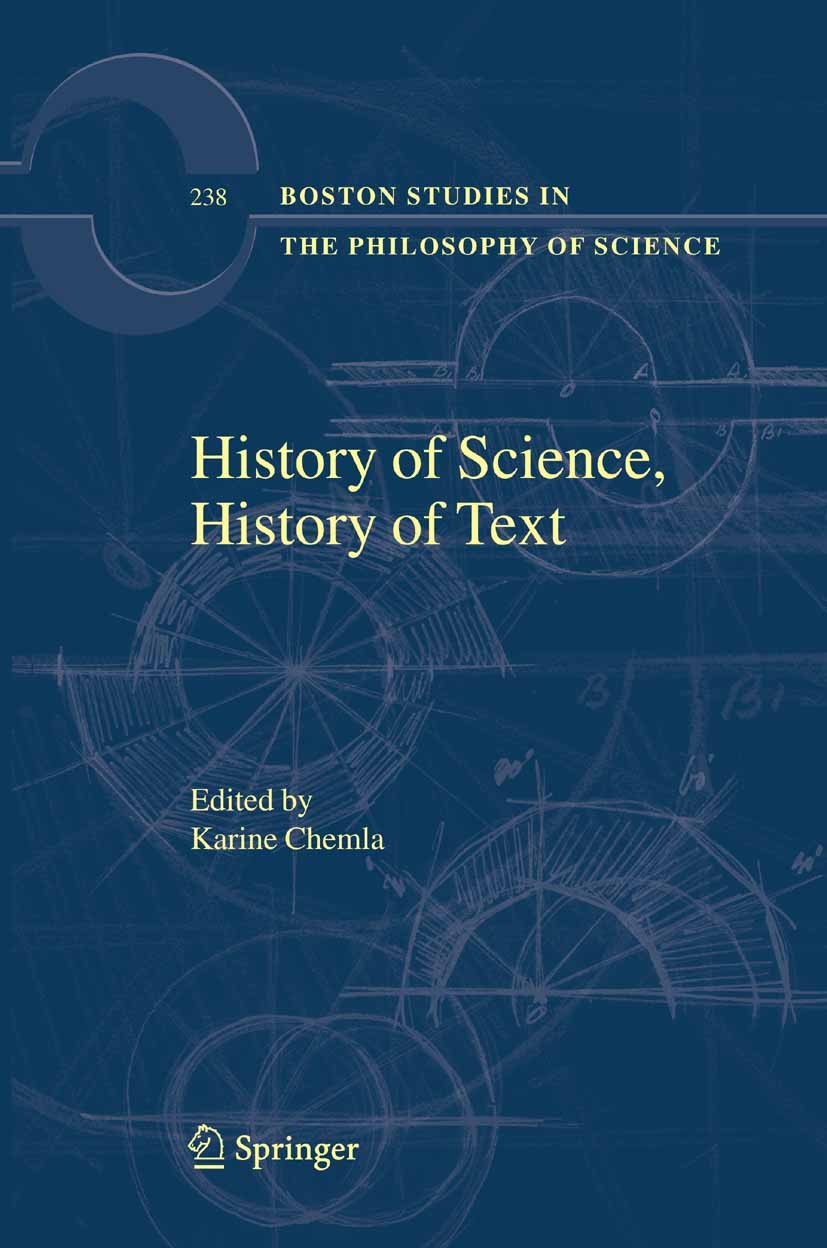| 书目名称 | History of Science, History of Text | | 编辑 | Karine Chemla | | 视频video | http://file.papertrans.cn/428/427593/427593.mp4 | | 丛书名称 | Boston Studies in the Philosophy and History of Science | | 图书封面 |  | | 描述 | two main (interacting) ways. They constitute that with which exploration into problems or questions is carried out. But they also constitute that which is exchanged between scholars or, in other terms, that which is shaped by one (or by some) for use by others. In these various dimensions, texts obviously depend on the means and technologies available for producing, reproducing, using and organizing writings. In this regard, the contribution of a history of text is essential in helping us approach the various historical contexts from which our sources originate. However, there is more to it. While shaping texts as texts, the practitioners of the sciences may create new textual resources that intimately relate to the research carried on. One may think, for instance, of the process of introduction of formulas in mathematical texts. This aspect opens up a wholerangeofextremelyinterestingquestionstowhichwewillreturnatalaterpoint.But practitioners of the sciences also rely on texts producedby themselves or others, which they bring into play in various ways. More generally, they make use of textual resources of every kind that is available to them, reshaping them, restricting, or enlargi | | 出版日期 | Book 2005 | | 关键词 | Gottfried Wilhelm Leibniz; History of Mathematics; antiquity; discourse; science; seventeenth century | | 版次 | 1 | | doi | https://doi.org/10.1007/1-4020-2321-9 | | isbn_softcover | 978-90-481-6636-7 | | isbn_ebook | 978-1-4020-2321-7Series ISSN 0068-0346 Series E-ISSN 2214-7942 | | issn_series | 0068-0346 | | copyright | Springer Science+Business Media B.V. 2005 |
The information of publication is updating

书目名称History of Science, History of Text影响因子(影响力)

书目名称History of Science, History of Text影响因子(影响力)学科排名

书目名称History of Science, History of Text网络公开度

书目名称History of Science, History of Text网络公开度学科排名

书目名称History of Science, History of Text被引频次

书目名称History of Science, History of Text被引频次学科排名

书目名称History of Science, History of Text年度引用

书目名称History of Science, History of Text年度引用学科排名

书目名称History of Science, History of Text读者反馈

书目名称History of Science, History of Text读者反馈学科排名

|
|
|
 |Archiver|手机版|小黑屋|
派博传思国际
( 京公网安备110108008328)
GMT+8, 2025-11-13 18:32
|Archiver|手机版|小黑屋|
派博传思国际
( 京公网安备110108008328)
GMT+8, 2025-11-13 18:32


